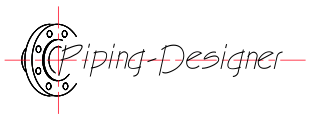Cost per Foot During Drilling
Cost per Foot During Drilling Formula |
||
|
\( D_c \;=\; \dfrac{ B_c + R_c \cdot ( R_t + R ) }{ F } \) (Cost per Foot During Drilling) \( B_c \;=\; \dfrac{ D_c - R_c \cdot ( R_t + R ) }{ F }\) \( R_c \;=\; \dfrac{ ( D_c - B_c ) \; F }{ R_t + R }\) \( R_t \;=\; \dfrac{ ( D_c - B_c ) \cdot F }{ R_c } - R \) \( R \;=\; \dfrac{ ( D_c - B_c ) \cdot F }{ R_c } - R_t \) \( F \;=\; \dfrac{ R_c \cdot ( R_t + R ) }{ D_c - B_c } \) |
||
| Symbol | English | Metric |
| \( D_c \) = Drilling Cost per Foot During Drilling | \(cost\) | - |
| \( B_c \) = Bit Cost | \(cost\) | - |
| \( R_c \) = Rig Cost | \(cost\;/\;hr\) | - |
| \( R_t \) = Rotating Time | \(hrs\) | - |
| \( R \) = Round Trip Time (for Depth) | \(hrs\) | - |
| \( F \) = Footage per Bit | \(ft\) | - |
The drilling cost per foot is used to evaluate the total cost of drilling a well per unit of depth. It accounts for various expenses involved in the drilling process and is widely used in the oil and gas industry to assess project efficiency, bit performance, and overall economics. The exact cost can vary significantly depending on factors like location, well type, depth, geological conditions, rig rates, and equipment used.

Cost per Foot During Drilling Formula |
||
| \( C_d \;=\; \dfrac{ ( C_b + C_{to} + C_m ) + ( T_d + T_t + T_c ) \cdot ( C_r + C_s + C_t ) }{ F \cdot T_d }\) | ||
| Symbol | English | Metric |
| \( C_d \) = Cost of Drilling per Foot | \(cost\;/\;hr \) | - |
| \( C_b \) = Bit Cost | \( cost \) | - |
| \( C_{to} \) = Tool Cost | \( cost \) | - |
| \( C_m \) = Mud Cost | \( cost \) | - |
| \( T_d \) = Drilling Time | \(hr\) | - |
| \( T_t \) = Trip Time | \(hr\) | - |
| \( T_c \) = Connection Time and Extras | \(hr\) | - |
| \( C_r \) = Rig Rate | \( cost\;/\;hr \) | - |
| \( C_s \) = Support Rate | \( cost\;/\;hr \) | - |
| \( C_t \) = Tool Rental Rate | \( cost\;/\;hr \) | - |
| \( F \) = Footage | \( ft\;/\;hr \) | - |
